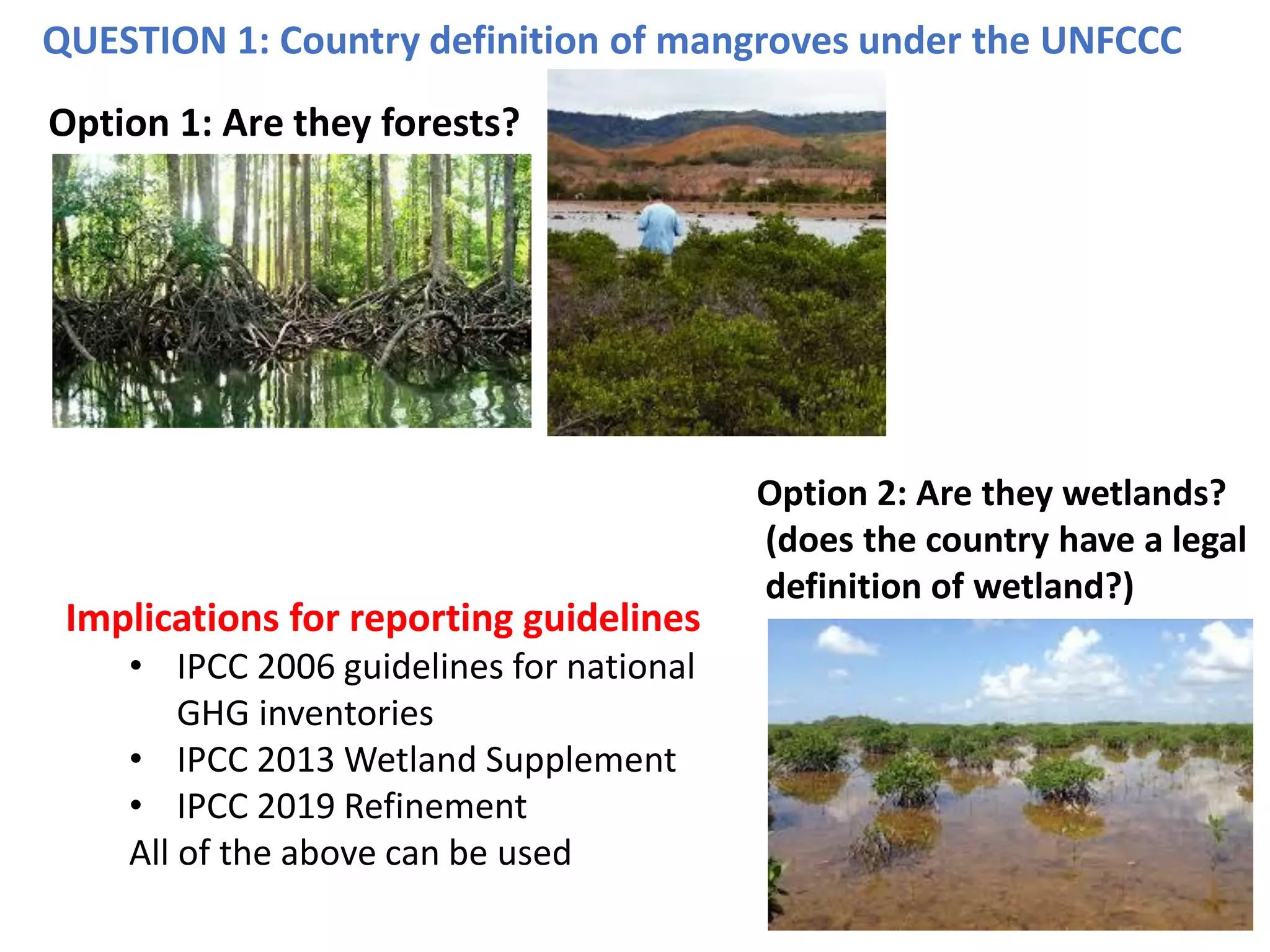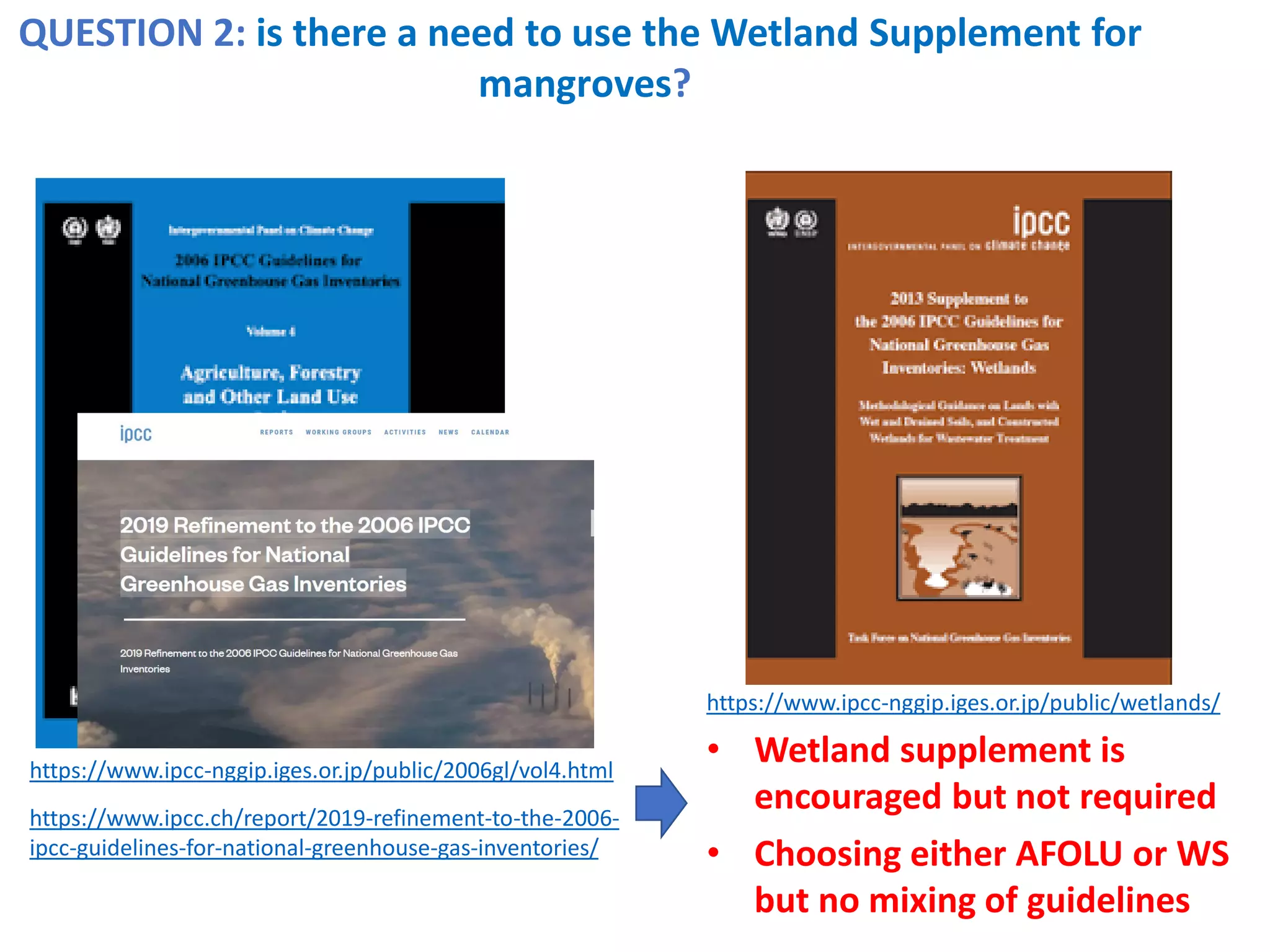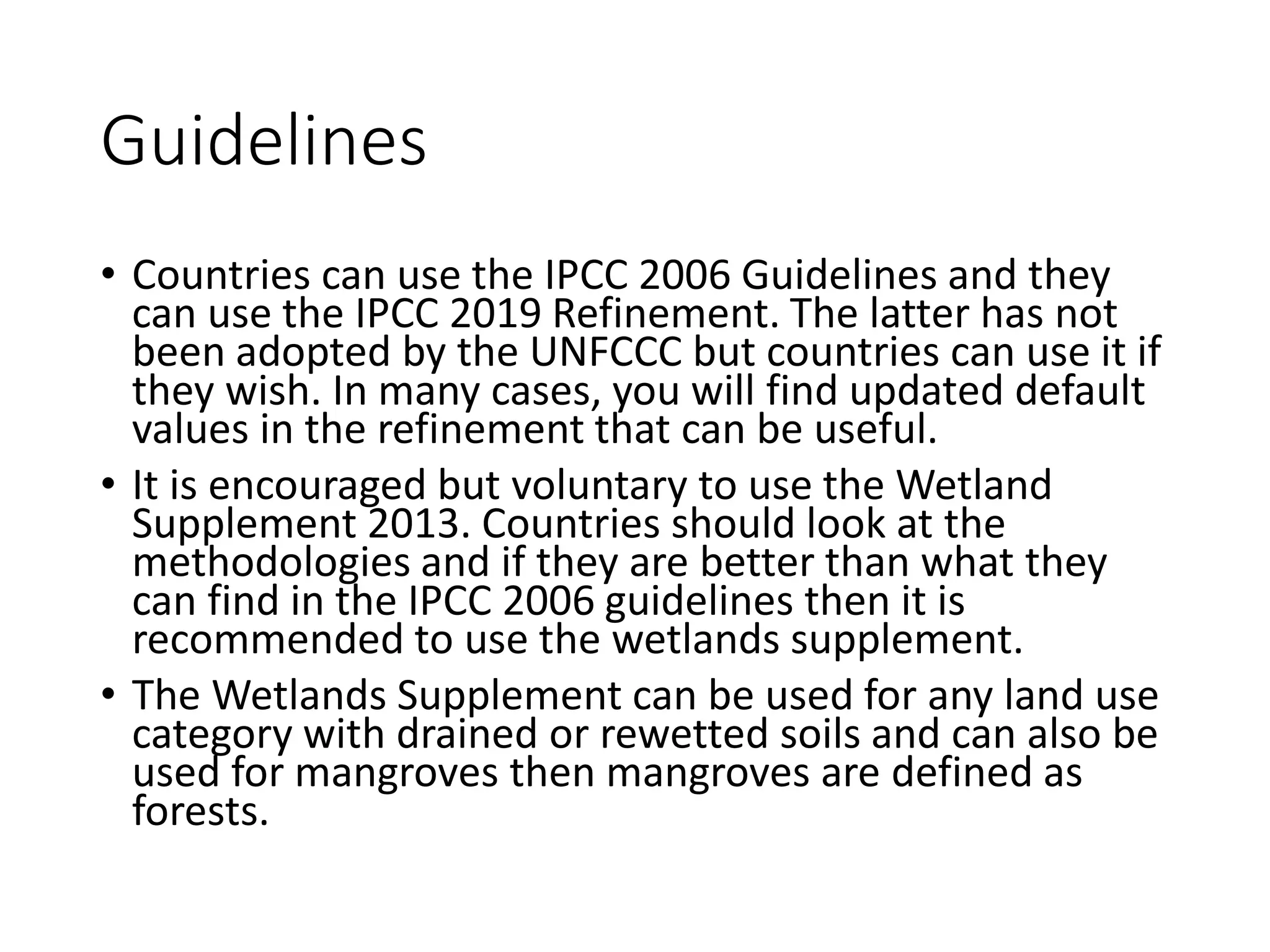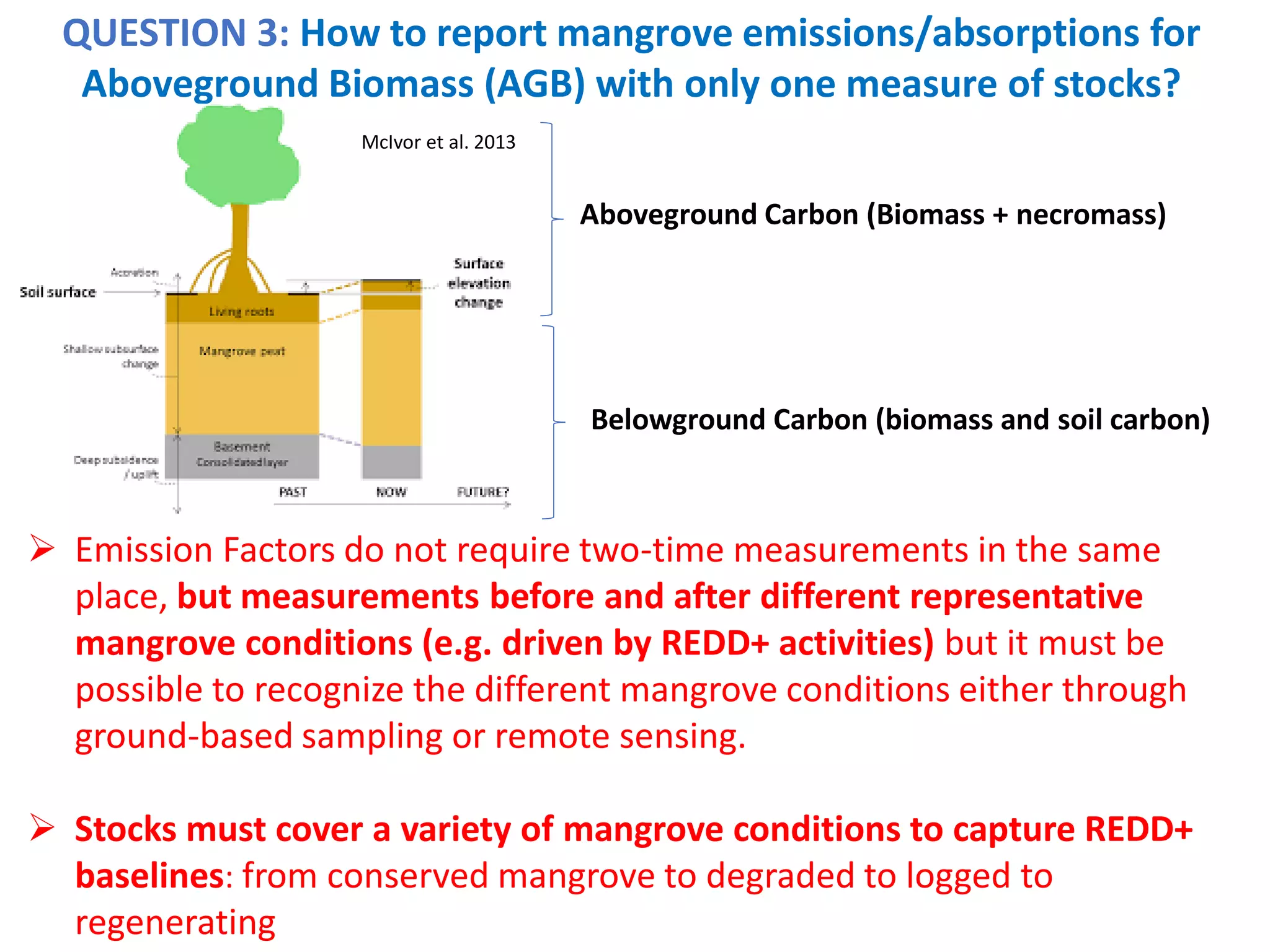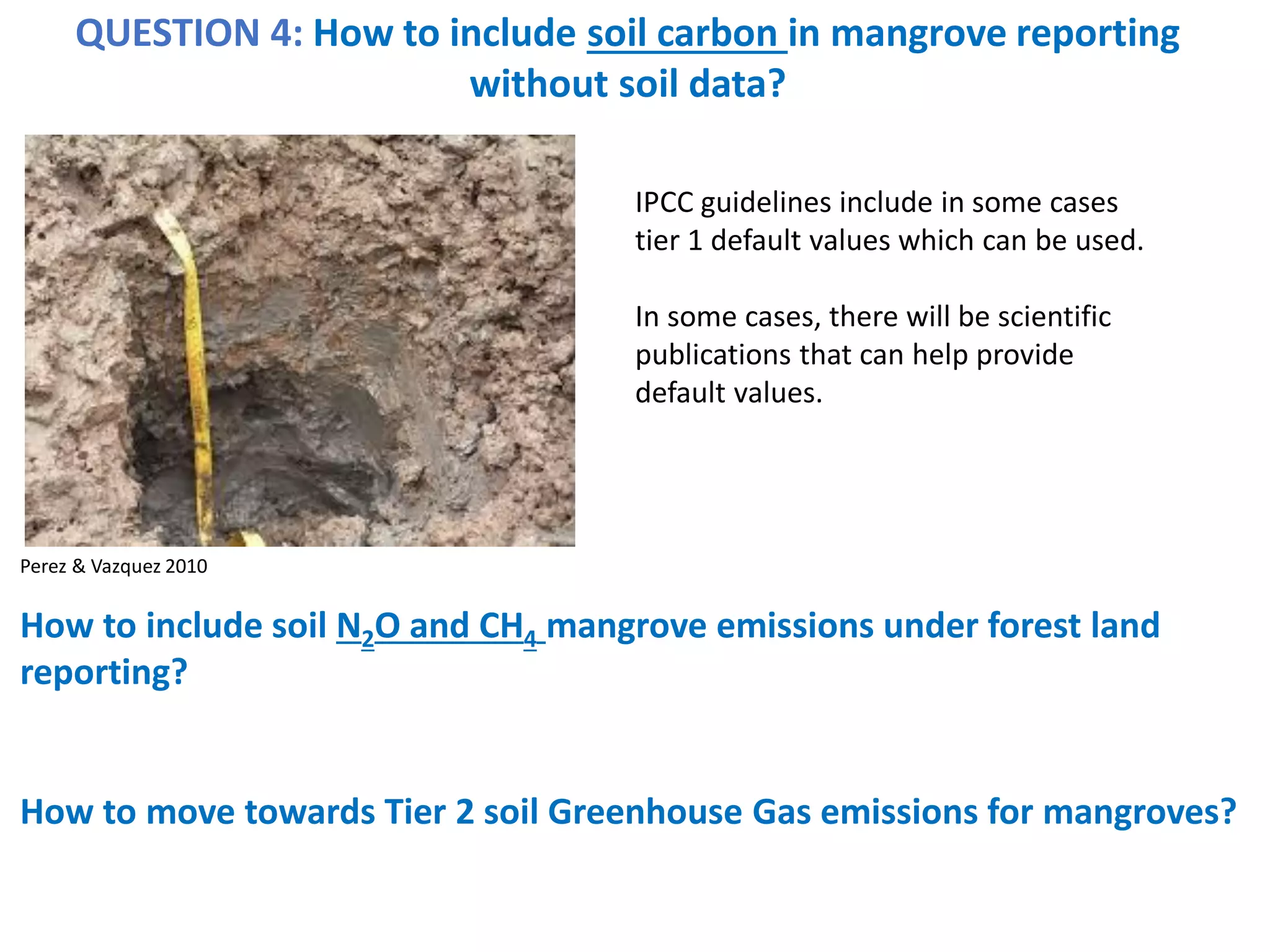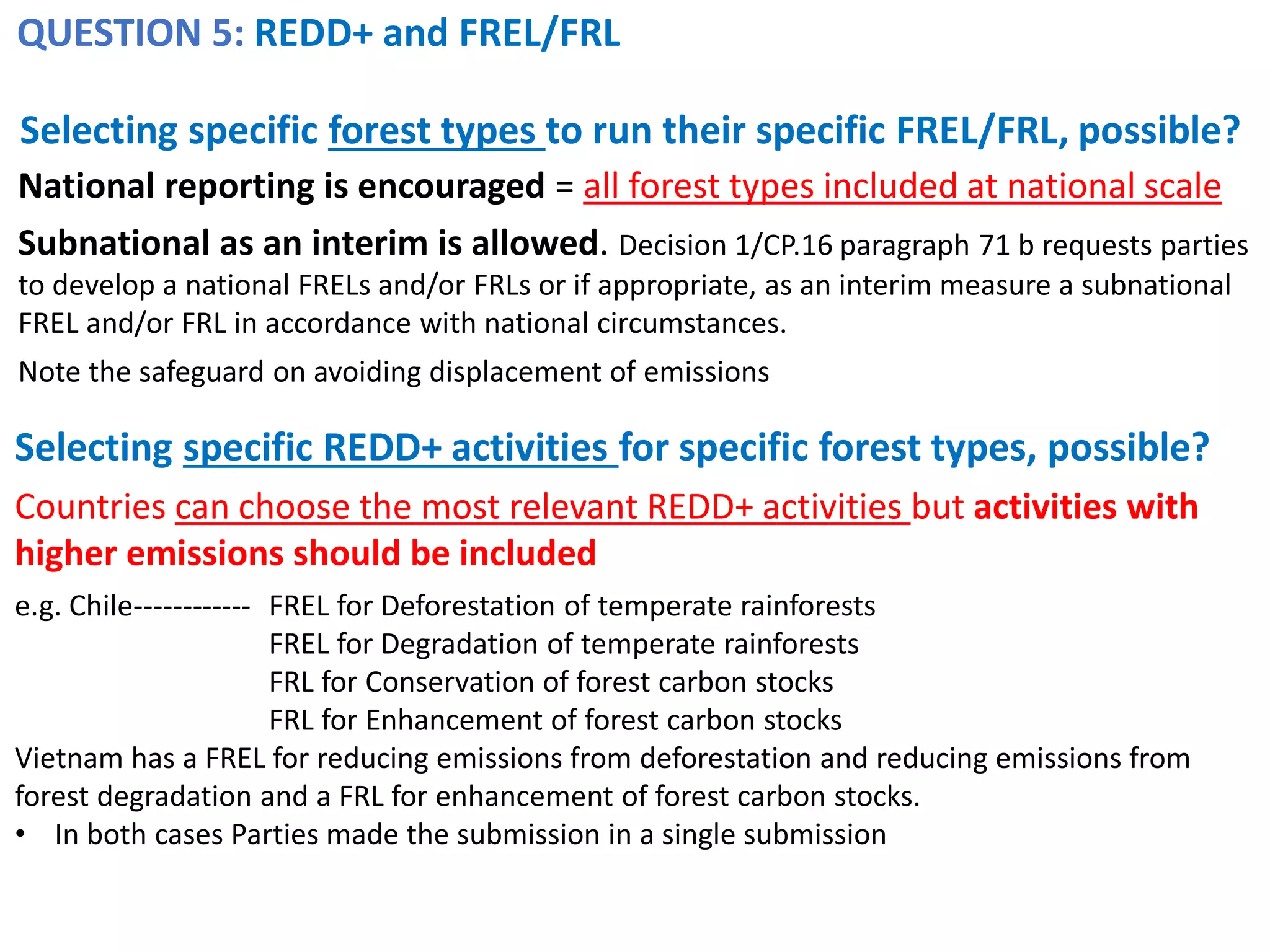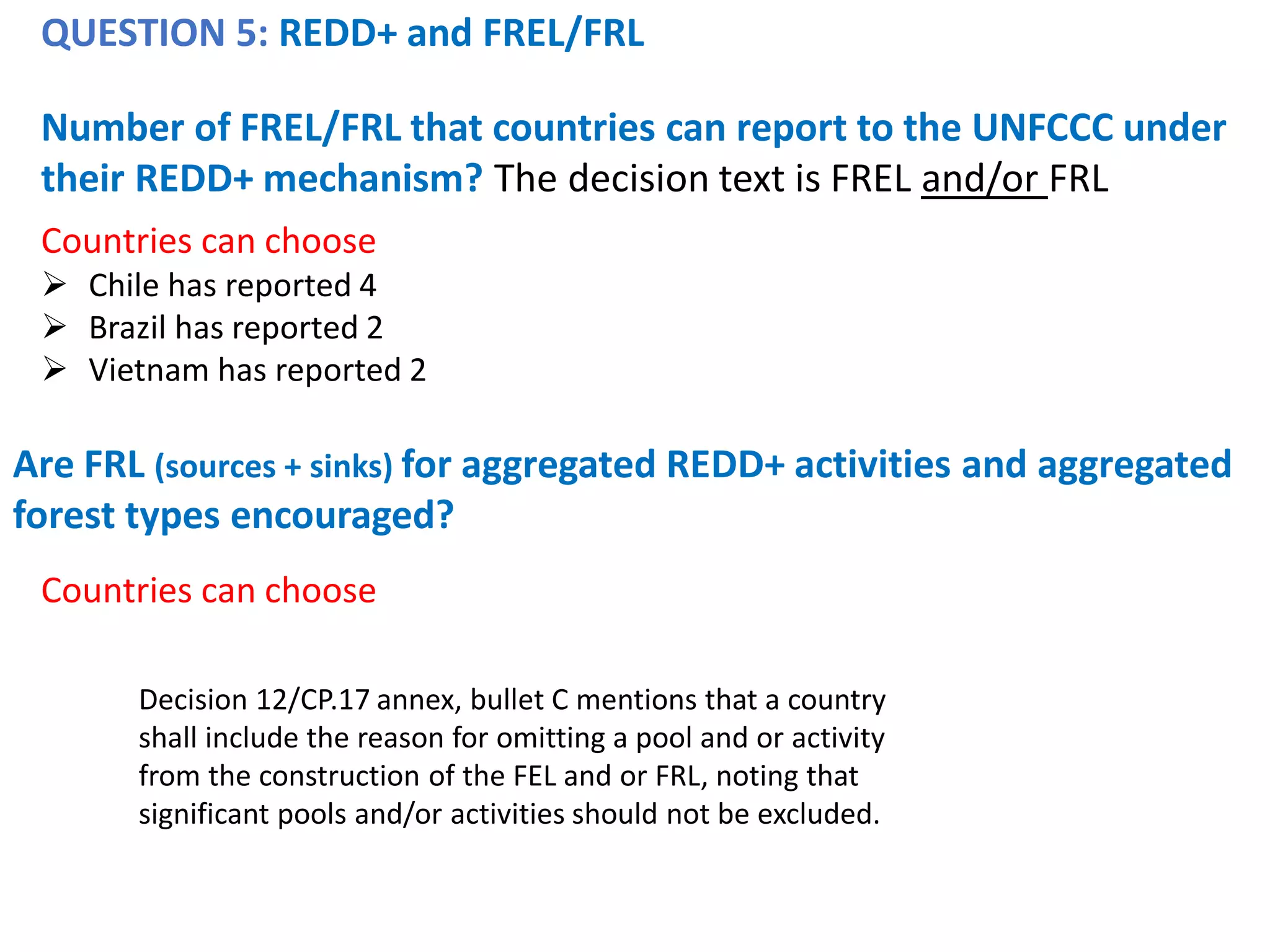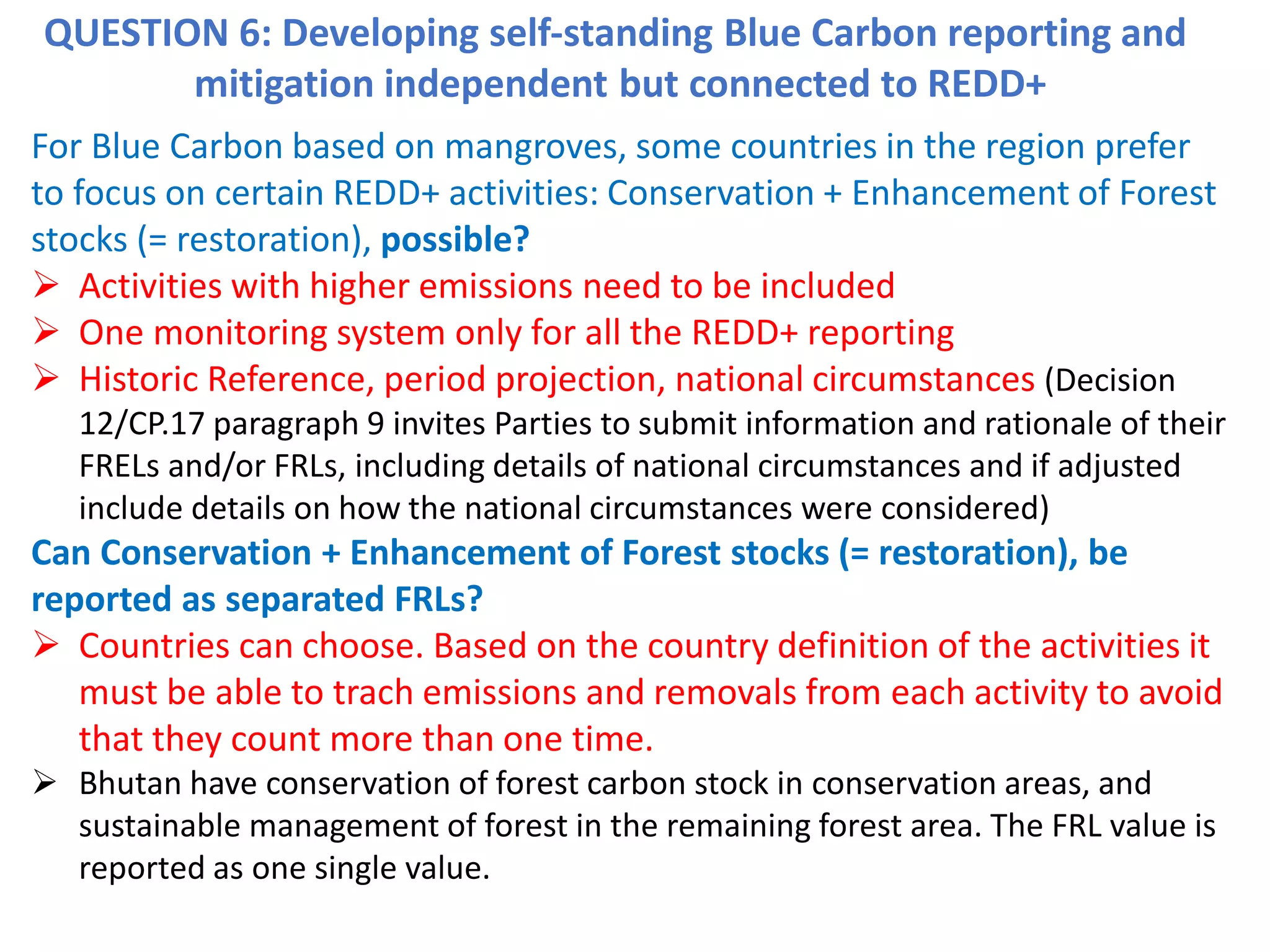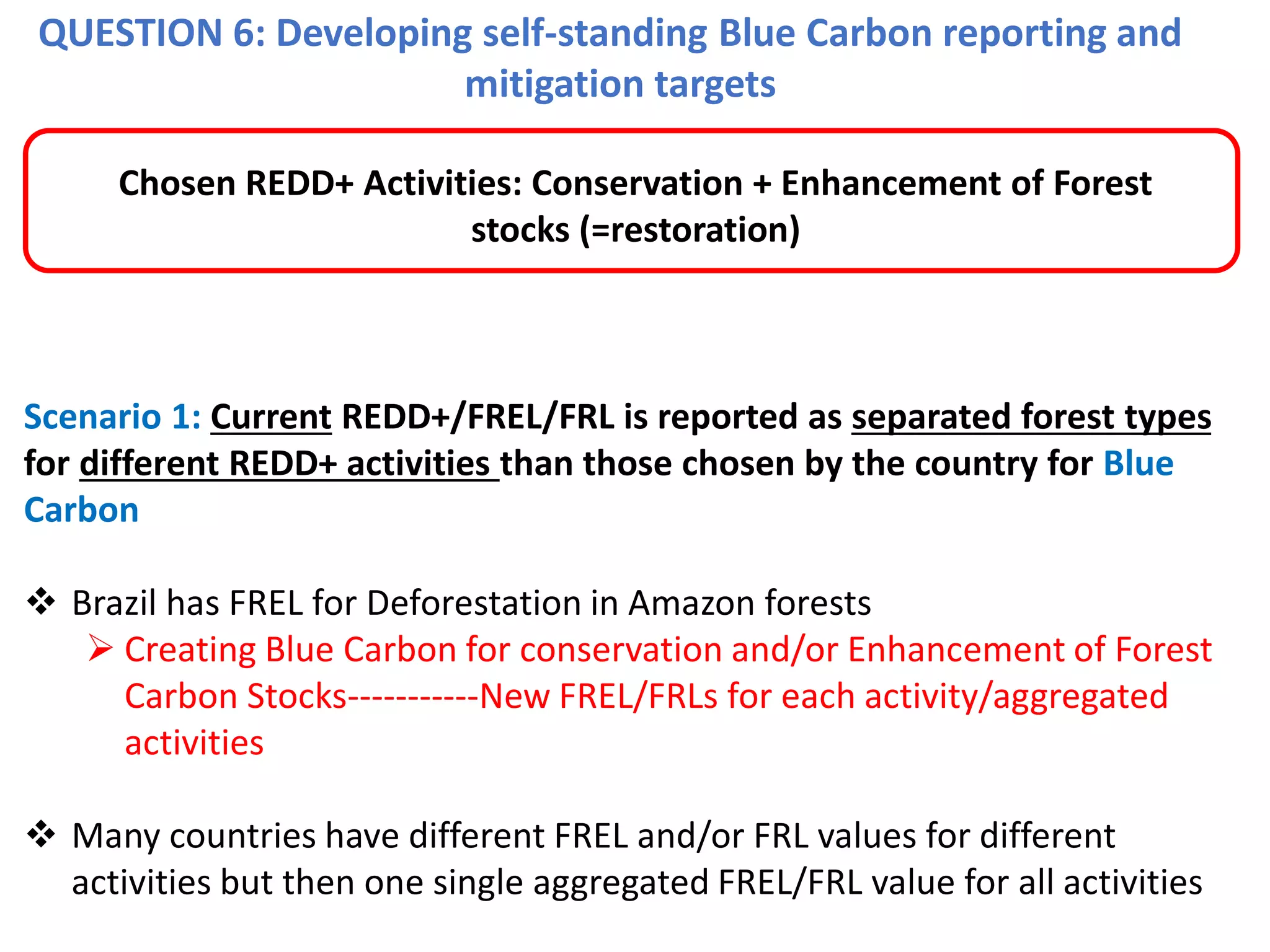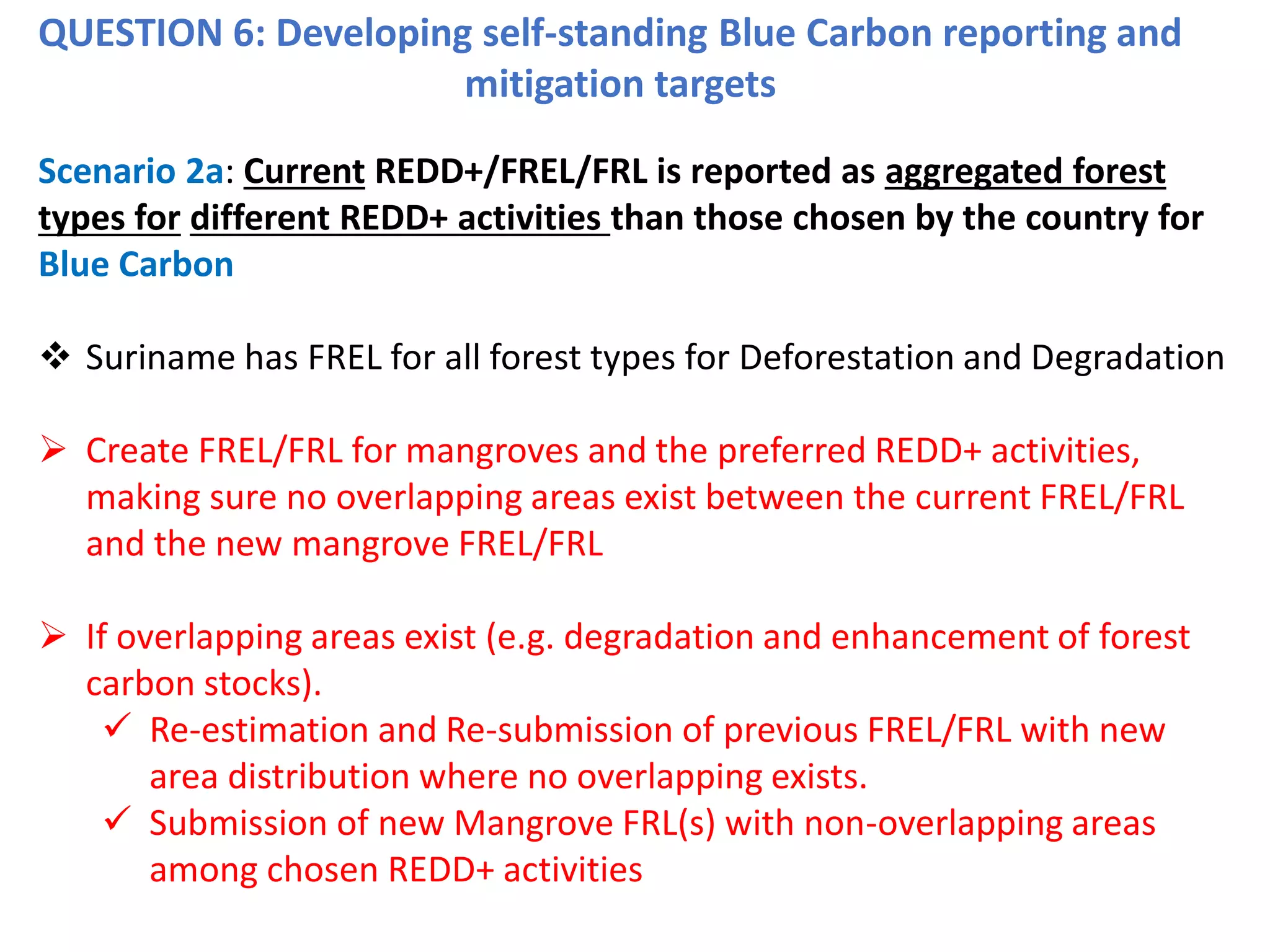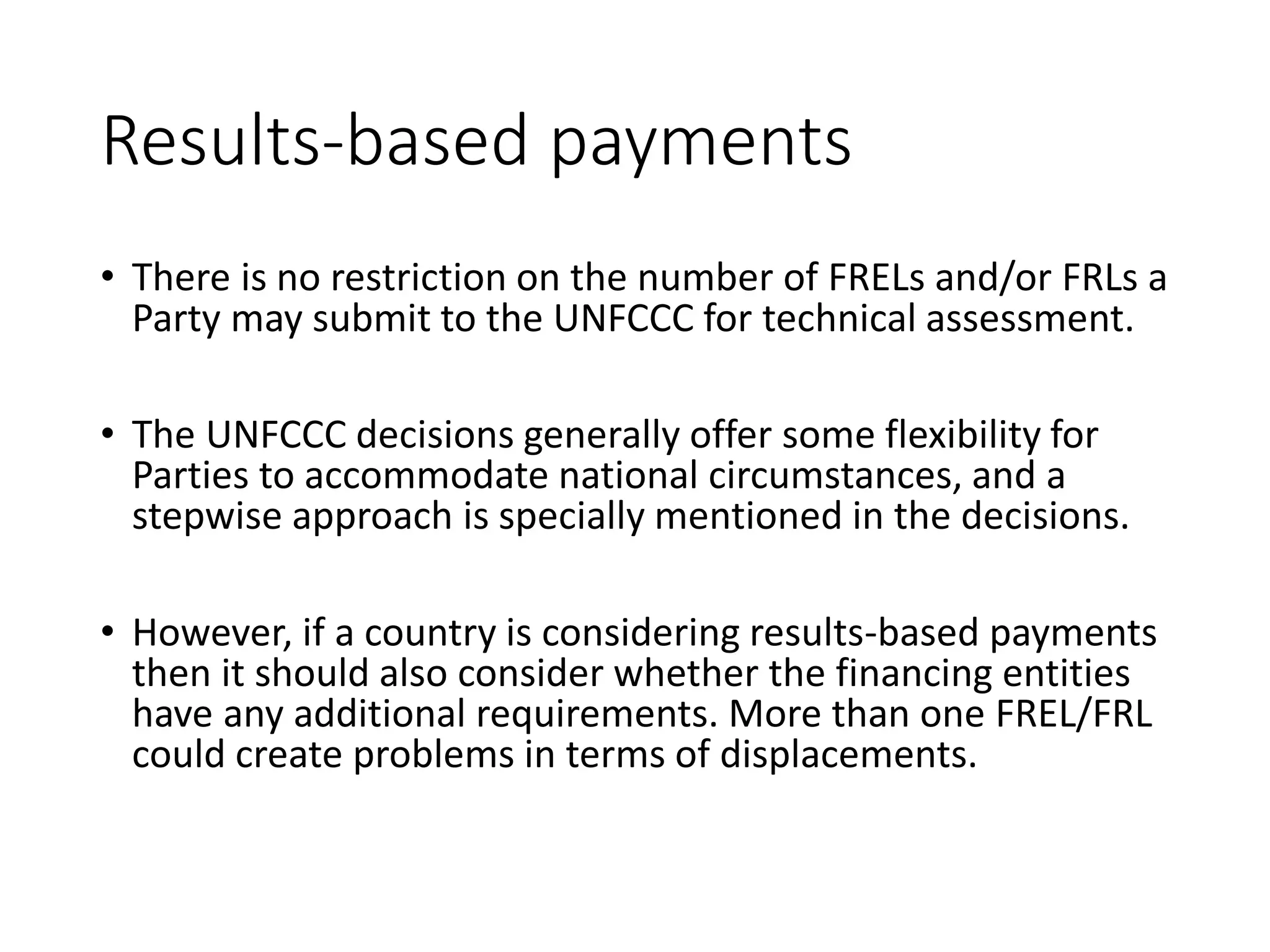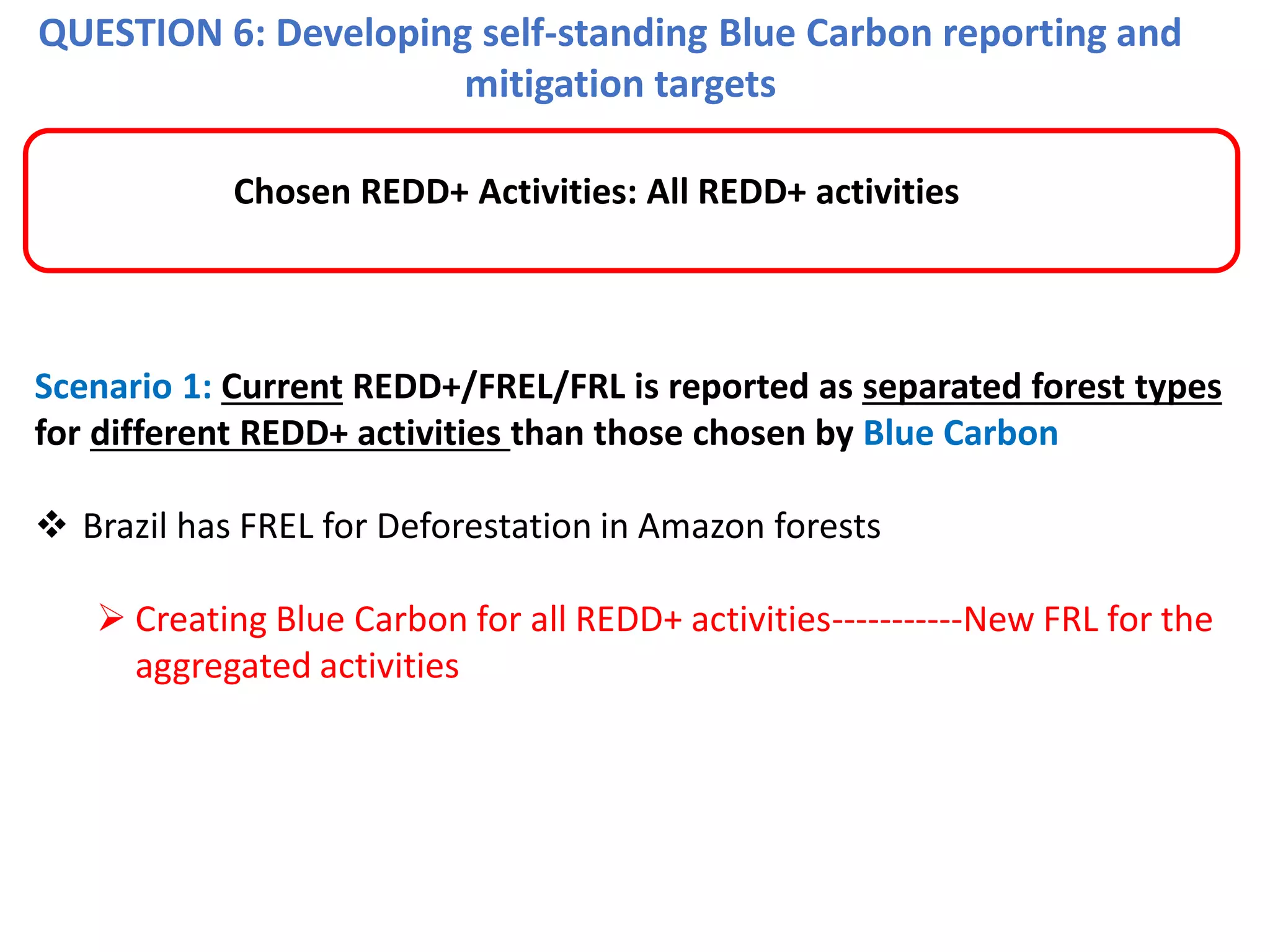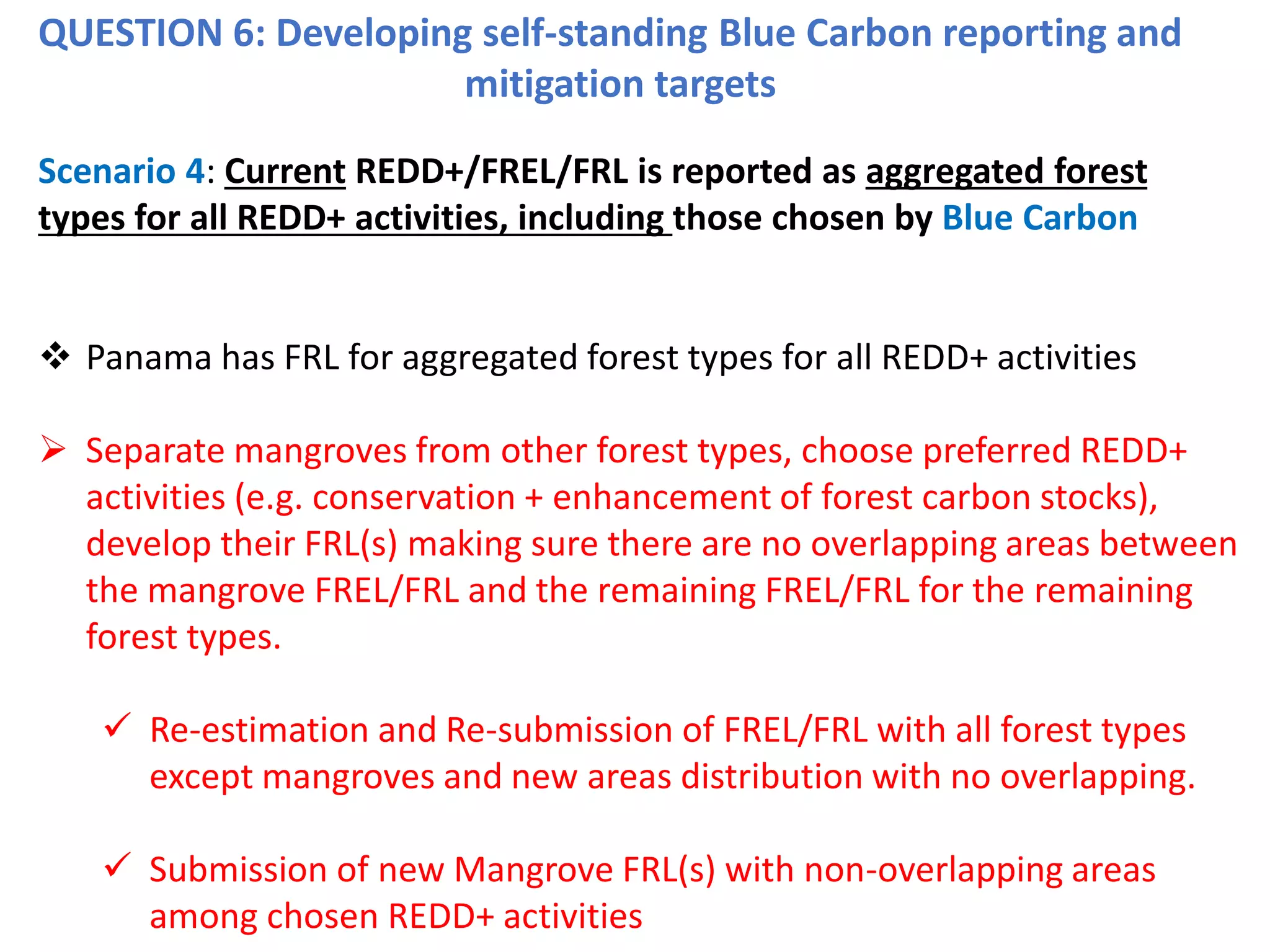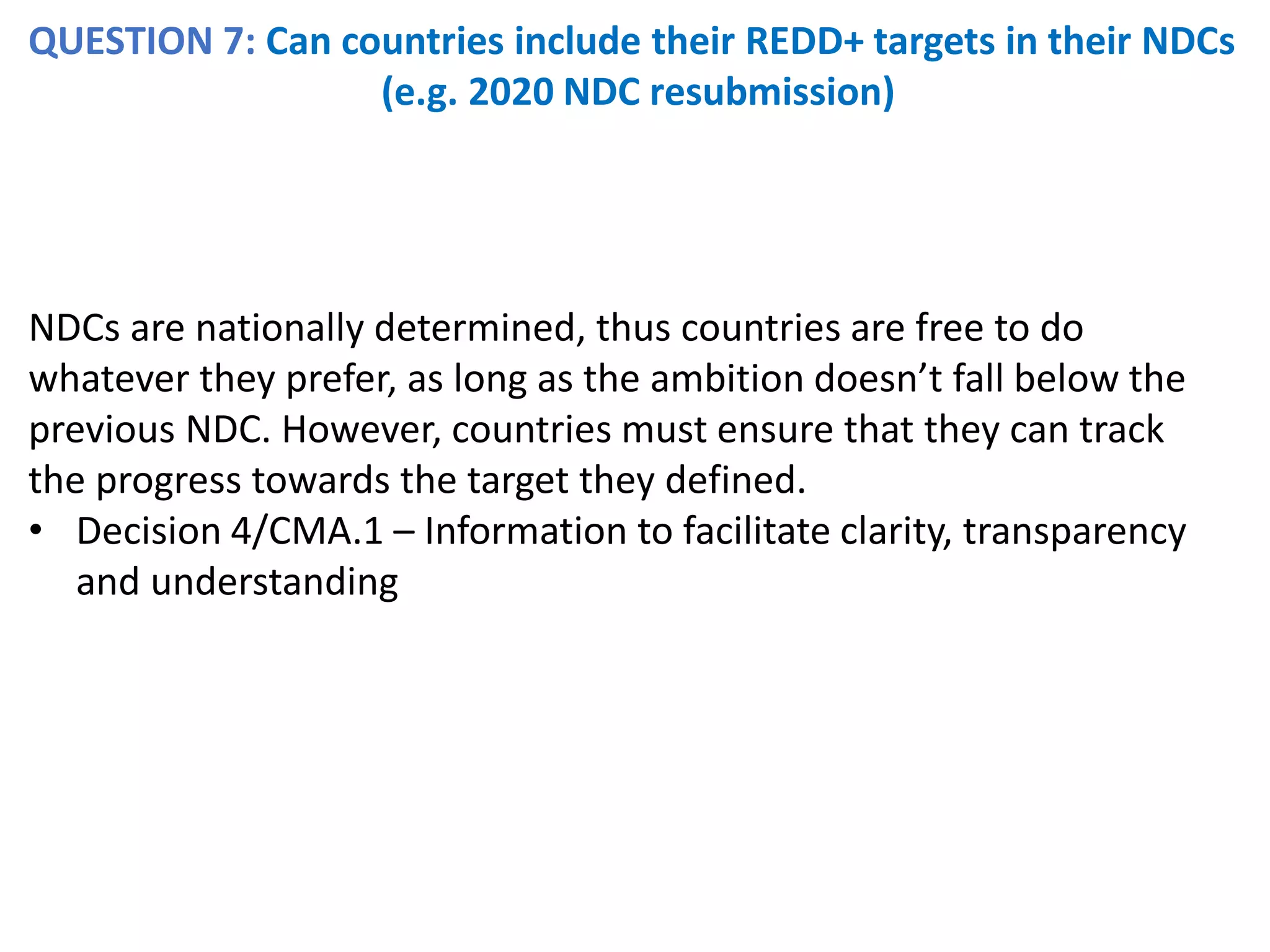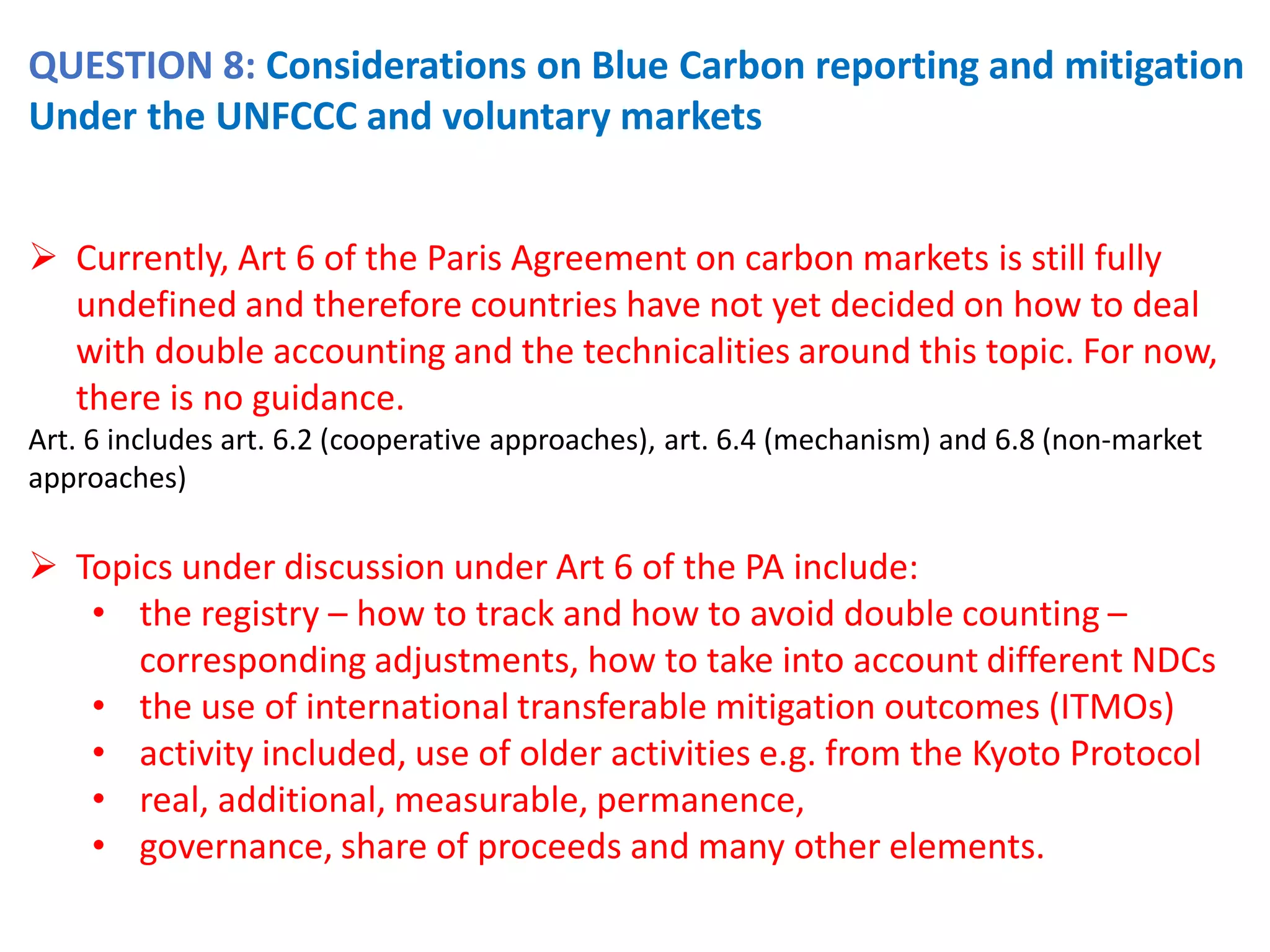The document discusses the definitions and reporting guidelines for mangroves under the UNFCCC, focusing on whether they are classified as forests or wetlands. It covers the use of various IPCC guidelines for greenhouse gas inventories, the necessity of utilizing the wetland supplement, and outlines methodologies for reporting mangrove emissions and carbon stocks. Additionally, it addresses the development of self-standing blue carbon reporting and how countries can incorporate mangrove targets into their nationally determined contributions (NDCs).
